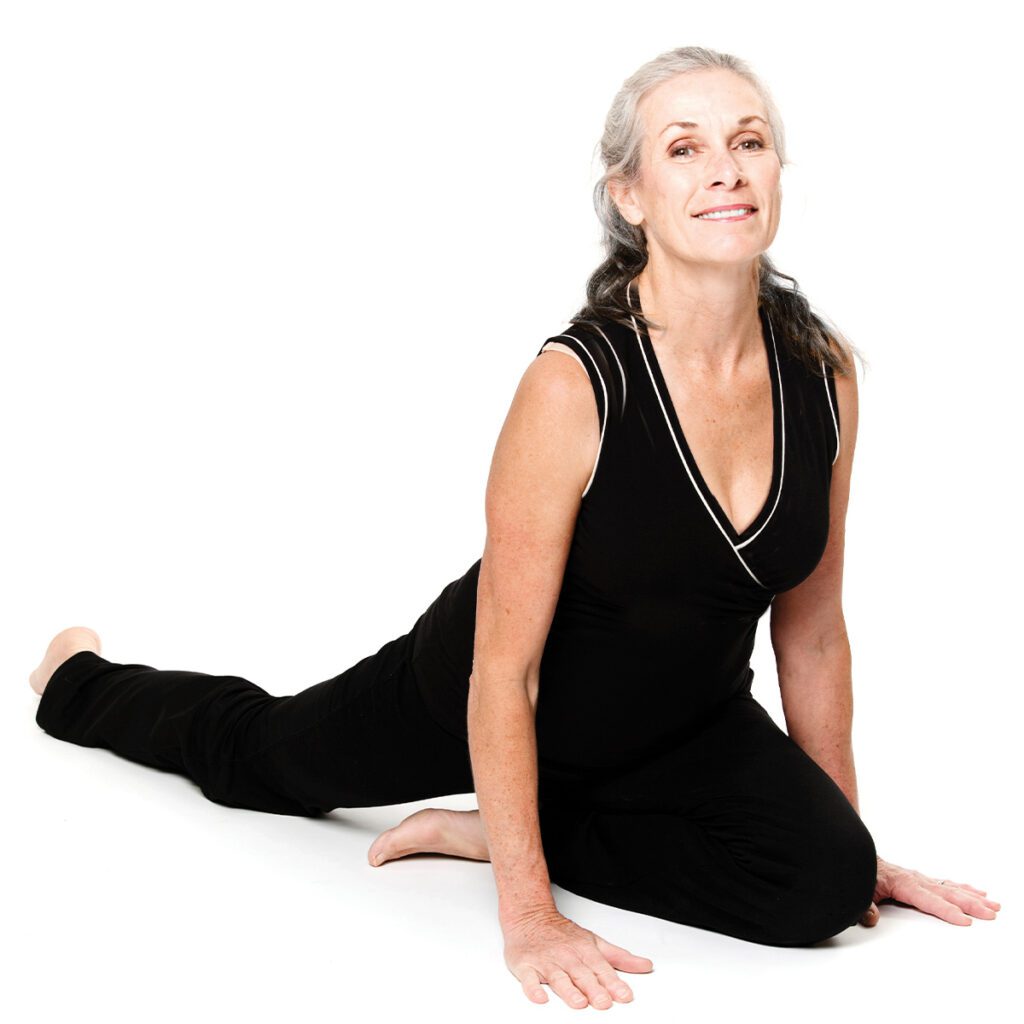Improving Overall Fitness and Well-Being
As our bodies get older, our flexibility decreases due to joint stiffness and pain caused by arthritis and inflammation. Many accept this as a natural process of aging and adjust their lifestyles to their physical limitations. But if you get up, move, and stretch on a regular basis, you can maintain and even improve your flexibility and overall health.
When most of us think of exercise, we think of walking, jogging, swimming, playing a team sport, or any activity that gets our hearts beating and makes us sweat. As we age, we also know the importance of retaining muscle mass, so we may incorporate strength training into our fitness regimen. In contrast, stretching is something we may or may not do for a minute before or after our real workout. As long as we get our cardio and lift a few weights, we’re good, right?
Wrong.
Contrary to popular belief, stretching is not just something you do before or after a workout to prevent soreness (although when done properly, this is one of the benefits). A stretching routine is a vital part of overall fitness, and it should be performed two to three times a week by everyone, especially older adults.


Ballistic & Dynamic Stretching
Remember bouncing up and down repeatedly to touch your toes in junior high gym class? That type of stretching is known as ballistic stretching. It has a tendency to cause injury and is no longer recommended. Often confused with ballistic stretching, dynamic stretching uses slow and controlled movements to gradually move muscles beyond their normal ranges of motion. A slow, controlled torso twist is an example of a dynamic stretch.
Active Stretching
If you’ve ever taken a yoga class, you know how challenging it can be to hold those poses. Many yoga positions are a form of active stretching, which involves holding a position with no assistance from anything but the body. Active stretching builds muscle and increases flexibility, so it’s great for the body.
Passive Stretching
Ever sat on the floor after exercising and used the ground to stretch your legs and body? This is passive stretching. It’s a great way to relax the body after a workout, and it helps reduce soreness and fatigue. Static stretching is a form of passive stretching in which you hold each position for an extended period to increase flexibility.
Isometric Stretching
Isometric stretching is one of the most effective ways to increase flexibility. This method involves using resistance from the body to flex the muscles in opposition to the resistance. An example would be straightening your leg while holding onto the ball of your foot with your hand. Proprioceptive neuromuscular facilitation (PNF), a technique combining passive and isometric stretching, is often used to rehabilitate stroke victims; it’s currently known as one of the quickest and most effective techniques for improving range of motion. In this technique, stretched muscles are contracted isometrically and then relaxed.
Best Fitness Activities for Increasing Flexibility and Reducing Stiffness
Yoga. “Yoga classes that combine relaxing breathing techniques with slow movement from one stretch/posture to the next are great for releasing tightness,” says Jessica Jollie, a yoga instructor with Yoga Landing. “Regular yoga practice can lead to a relaxed mind, better posture, and an overall sense of well-being.”
Pilates. Pilates is a lot like yoga but emphasizes your body’s core — the abdomen, obliques, lower back, inner and outer thigh, etc.
Water fitness. “Water exercising and stretching are beneficial to preventing and/or relieving joint stiffness because water is more dense than air,” says Frances Archer, a water aerobics instructor at the Sports Barn. “This gives the joints the ability to flex and extend with considerable less pain.”
What You Need to Know
A fitness professional can help you decide what type of stretching is right for you. It’s important to warm up for a few minutes so you aren’t stretching cold muscles. Take a short walk, or spend a few minutes on a stationary bike or treadmill. Once your body is warmed up, you will need to take the time to stretch each of the major muscle groups. Focus on the calves, thighs, hips, lower back, neck, and shoulders. Always make sure to give both sides equal time. Hold each stretch for about 30 seconds, and repeat it three to four times.
When stretching, always remember to pay attention to your body. Are you in pain? If so, back off. Pain does not mean gain when it comes to stretching. Mild discomfort is okay, but pain is not. Stretch for about 30 minutes two to three times per week for maximum results. If that seems like a large commitment, try 20 minutes and see how you feel after four weeks. If you prefer a group setting or need some direction, give tai chi or yoga a try. Several gyms offer classes designed for older adults and they can be a great way to meet people and be consistent about exercise.
When stretching, safety should always be a top priority. Before starting a stretching routine, consult a doctor if there is a particular part of your body that you would like to focus on, or if you have limitations due to a surgery or a medical condition. Stretching is not a one-size-fits-all kind of practice. Each person will have different limitations, different ranges of motion, and different needs. It is important to listen to your body and follow its lead; your flexibility will increase gradually.
Enjoying the Benefits
After your stretching routine has taken root and become a habit, you will begin to notice some positive changes in your body and life. Your flexibility will improve, and with it, your range of motion. Remember feeling pain when you bent down to pick things up? Picking up items off the floor may be a breeze now, as well as other tasks that were difficult in the past—tying shoes, pulling weeds, and a variety of everyday activities.
Regular stretching can also make you a better athlete. If you enjoy a tennis match or a round of golf on the weekends, stretching can really make a difference in your ability to perform. In addition, stretching can reduce chronic back pain and promote circulation, increasing blood flow to muscles and allowing for greater nutrient transportation throughout the body. Stretching is a simple act that may not seem important, but if done consistently and properly, it can truly be life-changing.



Frances Archer
Water Aerobics Instructor, the Sports Barn



Jessica Jollie
Yoga Instructor, Yoga Landing

